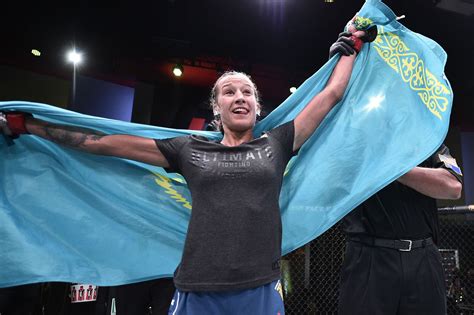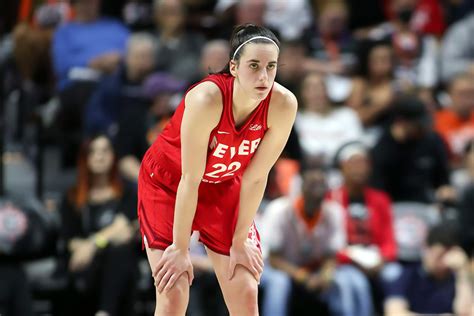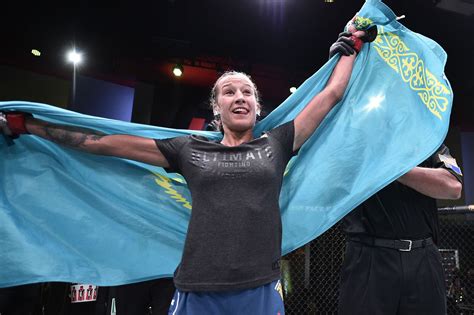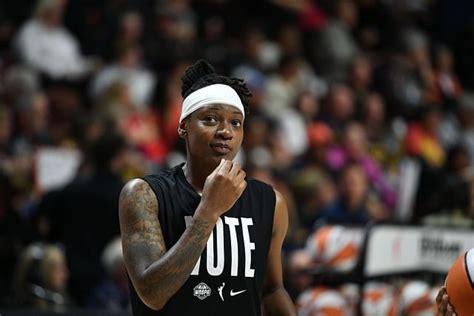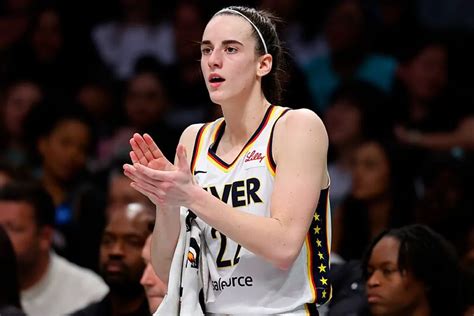
Growing criticism is mounting over the lack of WNBA action against players targeting Indiana Fever rookie Caitlin Clark with hard fouls, sparking a heated debate about league discipline, player safety, and the unwritten rules governing physicality towards high-profile rookies. Calls are intensifying for the WNBA to take a more proactive stance in protecting Clark, amid concerns that the current level of officiating and disciplinary measures are insufficient to deter potentially dangerous play.
The intense scrutiny surrounding Clark’s treatment on the court has ignited a broader discussion about the balance between competitive physicality and intentional targeting. While some observers argue that Clark is simply experiencing the typical initiation rites of a WNBA rookie, others contend that the fouls she has endured extend beyond the bounds of acceptable basketball and border on dangerous, warranting stronger intervention from the league. The controversy highlights the challenges the WNBA faces in managing player safety while preserving the league’s established reputation for toughness and competitiveness.
The debate intensified following several high-profile incidents where Clark appeared to be the target of overly aggressive plays. Social media and sports commentary platforms have been flooded with examples of fouls that many perceive as intentional and unnecessary. One such incident involved a hard foul during a game against the Chicago Sky, which resulted in widespread condemnation and fueled calls for the WNBA to review its disciplinary protocols. “There’s a difference between physical basketball and unnecessary, even dangerous, contact,” said one WNBA analyst. “The league needs to ensure that player safety is paramount.”
While the WNBA has consistently emphasized its commitment to player safety, critics argue that the league’s actions have not matched its words in Clark’s case. Fines and suspensions are typically reserved for egregious fouls or repeated offenders, but many believe that a more preventative approach is needed to deter the kind of behavior Clark has experienced. Some have suggested implementing a “flagrant foul” system similar to the NBA, where excessively hard fouls result in immediate ejection and potential further disciplinary action. Others advocate for a more thorough review of game footage to identify and penalize players who consistently engage in dangerous play.
The situation is further complicated by the unwritten rules and traditions of the WNBA, which often place a premium on physicality and toughness. Rookies are often expected to “earn their stripes” and prove themselves capable of withstanding the league’s demanding physical environment. However, critics argue that this culture can sometimes lead to a blurring of the lines between acceptable competitiveness and intentional targeting. “There’s a certain level of physicality that’s expected in the WNBA, but it shouldn’t cross the line into dangerous or malicious play,” said a former WNBA player. “The league needs to make it clear that targeting rookies is not part of the game.”
The growing concern over Clark’s treatment has also raised questions about the potential impact on the WNBA’s broader image and appeal. Clark’s arrival in the league has generated unprecedented levels of interest and attention, attracting new fans and significantly boosting television ratings. However, some fear that the perception of her being unfairly targeted could alienate these new fans and undermine the league’s efforts to grow its fanbase. “The WNBA has a golden opportunity to capitalize on the excitement surrounding Caitlin Clark,” said a sports marketing expert. “But if fans feel like she’s not being protected, it could have a negative impact on the league’s long-term prospects.”
The WNBA has yet to issue a formal statement addressing the specific concerns surrounding Clark’s treatment, but league officials have acknowledged the ongoing discussions and emphasized their commitment to ensuring player safety. The league is expected to review the incidents in question and consider potential changes to its disciplinary protocols. However, any changes are likely to be met with resistance from some players and coaches who believe that the current system is adequate. “We’re always looking for ways to improve the game and ensure player safety,” said a WNBA spokesperson. “But we also need to respect the traditions and competitive spirit of the league.”
The Caitlin Clark situation underscores the complex challenges the WNBA faces in balancing player safety, competitive integrity, and the preservation of its unique identity. As the league continues to grow and evolve, it will need to carefully navigate these challenges to ensure that all players are protected and that the game remains fair and exciting for fans. The resolution of this debate will have significant implications for the future of the WNBA and its ability to attract and retain both players and fans.
The physical play and perceived targeting of Caitlin Clark has led to increased scrutiny on the WNBA’s disciplinary policies and officiating standards. Some argue that the league needs to take a stronger stance against what they see as intentional and dangerous fouls, while others maintain that Clark is simply experiencing the normal physicality of professional basketball. The debate has sparked a broader conversation about player safety, the unwritten rules of the game, and the impact of Clark’s popularity on the league’s image.
The WNBA’s current disciplinary measures typically involve fines and suspensions for flagrant fouls or repeated offenses. However, critics argue that these measures are not sufficient to deter the type of aggressive play that Clark has faced. They suggest that the league should consider implementing stricter penalties, such as a “flagrant foul” system similar to the NBA, where excessively hard fouls result in immediate ejection and potential further disciplinary action.
The unwritten rules of the WNBA often emphasize physicality and toughness, with rookies expected to “earn their stripes” and prove their ability to withstand the league’s demanding physical environment. This culture can sometimes lead to a blurring of the lines between acceptable competitiveness and intentional targeting. Some argue that the league needs to make it clear that targeting rookies is not part of the game and that all players should be protected from unnecessary harm.
Clark’s arrival in the WNBA has generated unprecedented levels of interest and attention, attracting new fans and significantly boosting television ratings. However, some fear that the perception of her being unfairly targeted could alienate these new fans and undermine the league’s efforts to grow its fanbase. The WNBA has a golden opportunity to capitalize on the excitement surrounding Clark, but it needs to ensure that she is protected and that the game remains fair and exciting for all players and fans.
The WNBA has acknowledged the ongoing discussions and emphasized its commitment to ensuring player safety. The league is expected to review the incidents in question and consider potential changes to its disciplinary protocols. However, any changes are likely to be met with resistance from some players and coaches who believe that the current system is adequate. The resolution of this debate will have significant implications for the future of the WNBA and its ability to attract and retain both players and fans.
The issue is multi-faceted. On one hand, the WNBA has cultivated a reputation for hard-nosed, physical basketball. On the other, the league has a responsibility to protect its players, particularly a young star like Clark who is bringing unprecedented attention and revenue to the sport. Finding the right balance between these competing interests is proving to be a challenge.
Further complicating matters is the racial element that some have injected into the discussion. While the focus should remain on player safety and the rules of the game, it’s impossible to ignore the undercurrent of racial tension that sometimes surfaces in these debates, particularly on social media. It’s crucial to address these issues head-on and ensure that the discussion remains focused on fair play and respect for all athletes.
The lack of immediate and decisive action from the WNBA has only fueled the controversy. Critics argue that the league’s silence sends a message that targeting Clark is acceptable, or at least tolerated. They believe that a strong statement from the league, along with concrete steps to address the issue, is necessary to restore confidence in the WNBA’s commitment to player safety.
The potential consequences of inaction are significant. If the WNBA fails to adequately protect Clark, it risks alienating its new fanbase, damaging its reputation, and potentially deterring other young stars from joining the league. The league needs to act swiftly and decisively to address the issue and ensure that all players are treated fairly and respectfully.
Several prominent figures in the basketball world have weighed in on the debate. Some have defended the physicality of the WNBA, arguing that Clark needs to adapt to the league’s style of play. Others have condemned the perceived targeting of Clark, calling for stricter penalties and a more proactive approach from the league. The diverse range of opinions highlights the complexity of the issue and the challenges the WNBA faces in finding a solution that satisfies all stakeholders.
The debate over Caitlin Clark’s treatment in the WNBA is not just about one player or one league. It’s about the broader issues of player safety, competitive integrity, and the responsibility of sports organizations to protect their athletes. The WNBA’s response to this situation will have far-reaching implications for the future of the league and the sport of basketball as a whole.
The narrative surrounding Clark’s treatment has evolved rapidly in recent weeks. What began as a discussion about rookie initiation has morphed into a broader debate about player safety and the WNBA’s responsibility to protect its stars. The changing narrative reflects the growing awareness of the issue and the increasing pressure on the league to take action.
One of the key challenges the WNBA faces is balancing the need to protect its players with the desire to maintain its reputation for toughness and physicality. The league has always prided itself on its hard-nosed style of play, and some fear that stricter rules could soften the game and make it less appealing to fans. However, others argue that player safety should always be the top priority, even if it means making some adjustments to the league’s style of play.
Another challenge is the subjective nature of officiating. Fouls are often a matter of interpretation, and what one referee considers a legitimate play, another might consider a flagrant foul. This subjectivity can lead to inconsistencies in officiating and fuel the perception that Clark is being unfairly targeted.
The WNBA’s collective bargaining agreement (CBA) plays a significant role in shaping the league’s disciplinary policies. The CBA outlines the procedures for investigating and penalizing player misconduct, and any changes to these procedures would require the approval of both the league and the players’ union. This can make it difficult to implement new rules or policies quickly, even when there is widespread agreement that they are necessary.
The social media landscape has also contributed to the intensity of the debate. Videos of controversial fouls are quickly shared and dissected online, often leading to heated discussions and calls for action. While social media can be a valuable tool for raising awareness about important issues, it can also amplify emotions and make it more difficult to have a rational and productive discussion.
The WNBA’s response to the Caitlin Clark situation will likely set a precedent for how the league handles similar issues in the future. If the league takes a strong stance against targeting and implements stricter penalties, it could send a message that player safety is its top priority. Conversely, if the league takes a more lenient approach, it could embolden players to continue engaging in aggressive play.
The outcome of this debate will have a significant impact on the future of the WNBA. If the league can successfully navigate these challenges and create a safe and fair environment for all players, it will be well-positioned to continue growing its fanbase and attracting new talent. However, if the league fails to address these issues effectively, it risks alienating its fans and damaging its reputation.
The incidents involving Clark have also sparked a debate about the role of race and gender in sports. Some have argued that Clark is being targeted because she is a white player in a predominantly Black league. Others have dismissed these claims, arguing that Clark is simply experiencing the normal challenges of being a rookie in a professional sport. It’s important to approach these discussions with sensitivity and avoid making generalizations or stereotypes.
The WNBA has a long history of promoting diversity and inclusion. The league has consistently supported initiatives aimed at empowering women and girls, and it has been a vocal advocate for social justice. It’s important to remember this history when discussing the current debate and to avoid perpetuating harmful stereotypes.
The focus should remain on the issue of player safety and the need to create a fair and equitable environment for all athletes. By working together, the league, the players’ union, and the fans can help ensure that the WNBA remains a vibrant and exciting league for years to come.
The intense media coverage surrounding Clark has amplified the debate and put even more pressure on the WNBA to take action. Every foul, every comment, and every decision is scrutinized and analyzed, making it difficult for the league to operate without facing criticism. The media attention also highlights the importance of the issue and the need for a swift and decisive resolution.
The WNBA has a responsibility to protect its players, not just from physical harm, but also from verbal abuse and online harassment. The league needs to take steps to ensure that all players are treated with respect, both on and off the court. This includes cracking down on racist and sexist comments and providing resources for players who are experiencing online harassment.
The Caitlin Clark situation is a complex and multifaceted issue with no easy answers. However, by focusing on the principles of player safety, competitive integrity, and respect for all athletes, the WNBA can navigate these challenges and emerge as a stronger and more vibrant league.
The controversy has also reignited the debate about the level of officiating in the WNBA. Some argue that the referees are not adequately protecting Clark from aggressive play, while others maintain that the officiating is fair and consistent. The WNBA needs to continue to invest in training and development for its referees to ensure that they are able to effectively enforce the rules and protect the players.
The long-term impact of the Caitlin Clark situation on the WNBA remains to be seen. However, it is clear that this controversy has the potential to reshape the league and its relationship with its fans. The WNBA needs to learn from this experience and take steps to ensure that similar situations do not arise in the future.
The league should also consider implementing a more transparent system for reviewing and penalizing player misconduct. This would help to build trust with the fans and demonstrate that the league is committed to taking player safety seriously. The WNBA could publish summaries of disciplinary actions taken, explaining the rationale behind each decision.
Ultimately, the responsibility for creating a safe and fair environment rests with all stakeholders in the WNBA, including the league, the players’ union, the coaches, the referees, and the fans. By working together, they can help ensure that the league remains a vibrant and exciting place for all.
The debate over Caitlin Clark’s treatment has also highlighted the importance of mental health in sports. Professional athletes face immense pressure to perform at a high level, and they often experience stress, anxiety, and depression. The WNBA needs to provide resources and support for its players to help them cope with these challenges.
The league should also encourage players to speak out about their experiences and to seek help when they need it. By destigmatizing mental health issues, the WNBA can create a more supportive and understanding environment for its players.
The Caitlin Clark situation is a reminder that sports are not just about winning and losing. They are also about building character, promoting teamwork, and fostering respect. The WNBA has the opportunity to use this controversy as a teachable moment and to reaffirm its commitment to these values.
The league should also consider implementing a mentorship program to help young players navigate the challenges of professional sports. This would provide rookies like Clark with a support system and guidance from experienced veterans who can help them adjust to the demands of the WNBA.
The mentorship program could also focus on educating players about the league’s rules and policies, as well as the importance of sportsmanship and respect. This would help to create a more positive and professional culture within the WNBA.
The Caitlin Clark situation has sparked a national conversation about the WNBA and women’s sports in general. This is a valuable opportunity for the league to showcase its talent and to promote its values. The WNBA needs to seize this moment and use it to build a stronger and more sustainable future for women’s basketball.
The league should also consider partnering with schools and community organizations to promote youth basketball programs. This would help to introduce young girls to the sport and to inspire them to pursue their dreams.
The Caitlin Clark situation is a complex and challenging issue, but it is also an opportunity for the WNBA to grow and evolve. By focusing on the principles of player safety, competitive integrity, and respect for all athletes, the league can emerge as a stronger and more vibrant force in the world of sports.
Frequently Asked Questions (FAQ):
Q1: What is the core issue in the Caitlin Clark WNBA discipline debate?
A: The core issue revolves around the perceived lack of WNBA intervention and disciplinary action against players who have been accused of targeting Indiana Fever rookie Caitlin Clark with overly aggressive and potentially dangerous fouls. This has sparked a debate about player safety, the appropriateness of physicality towards rookies, and whether the league’s current disciplinary measures are sufficient to deter such behavior.
Q2: What are the main arguments presented by those who believe Caitlin Clark is being unfairly targeted?
A: Those who believe Clark is being unfairly targeted argue that some fouls against her go beyond the normal physicality of the game and appear to be intentional attempts to injure or intimidate her. They point to specific incidents where Clark has been subjected to hard fouls that they believe warrant stricter penalties from the WNBA. They also suggest that Clark’s high profile and popularity may be contributing factors, leading to resentment or a desire to “teach her a lesson.”
Q3: What are the counterarguments from those who believe Caitlin Clark is simply experiencing typical rookie treatment?
A: Those who believe Clark is experiencing typical rookie treatment argue that she is simply going through the expected initiation rites of a WNBA rookie. They contend that physicality is a hallmark of the league and that all rookies must adapt to the heightened level of competition. They may also argue that Clark’s struggles are being overblown due to her fame and that she needs to prove herself capable of withstanding the demands of professional basketball.
Q4: What actions have been suggested for the WNBA to address the concerns raised in the debate?
A: Several actions have been suggested for the WNBA, including:
- Implementing a “flagrant foul” system similar to the NBA, where excessively hard fouls result in immediate ejection and potential further disciplinary action.
- Conducting a more thorough review of game footage to identify and penalize players who consistently engage in dangerous play.
- Issuing a stronger public statement emphasizing the league’s commitment to player safety and condemning targeting behavior.
- Reviewing and potentially revising the collective bargaining agreement (CBA) to strengthen disciplinary protocols.
Q5: How might this controversy impact the WNBA’s future?
A: The controversy could have significant implications for the WNBA’s future in several ways:
- Fan Engagement: If fans feel that Clark is not being adequately protected, it could alienate new fans who have been drawn to the league by her popularity.
- Player Recruitment: Potential future stars may be deterred from joining the WNBA if they perceive the league as unsafe or unfairly competitive.
- League Image: The controversy could damage the WNBA’s reputation and undermine its efforts to grow its fanbase.
- Disciplinary Precedent: The WNBA’s response to this situation will likely set a precedent for how the league handles similar issues in the future, influencing the balance between player safety and competitive integrity.






